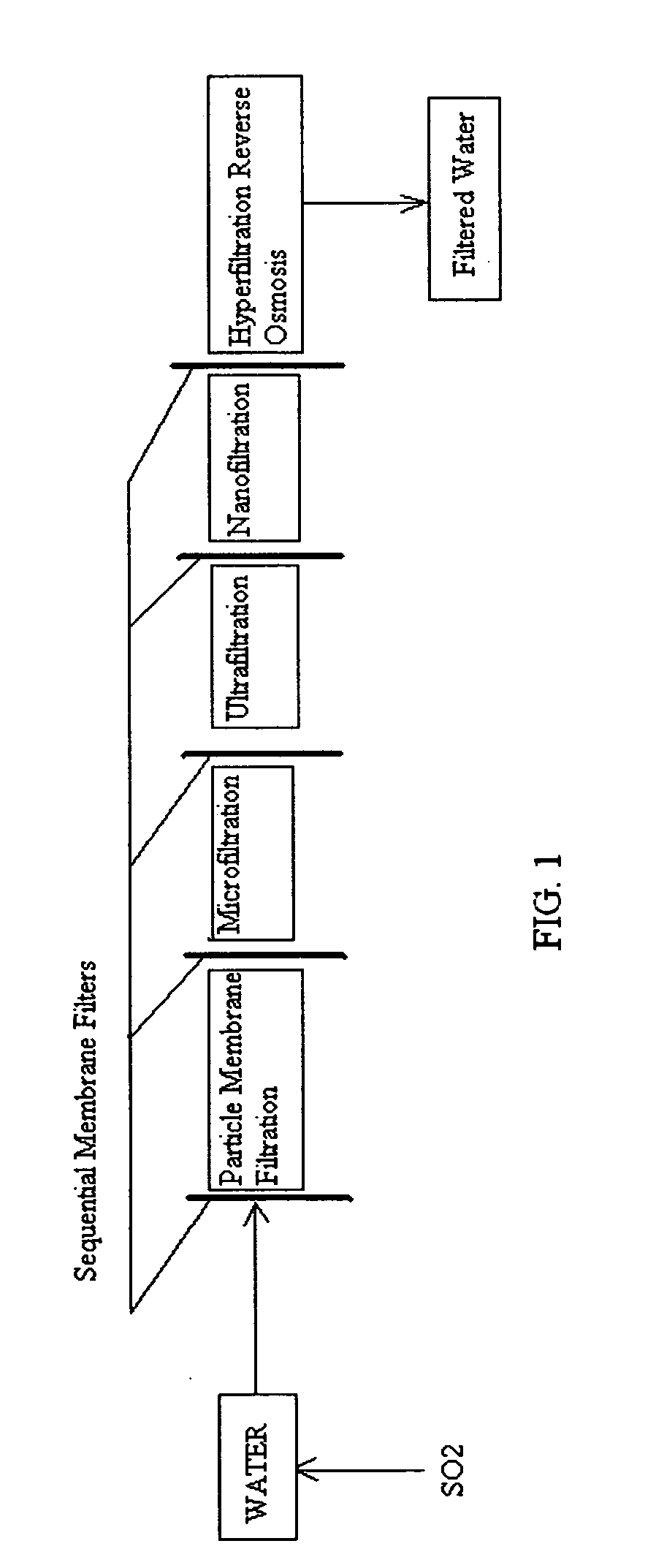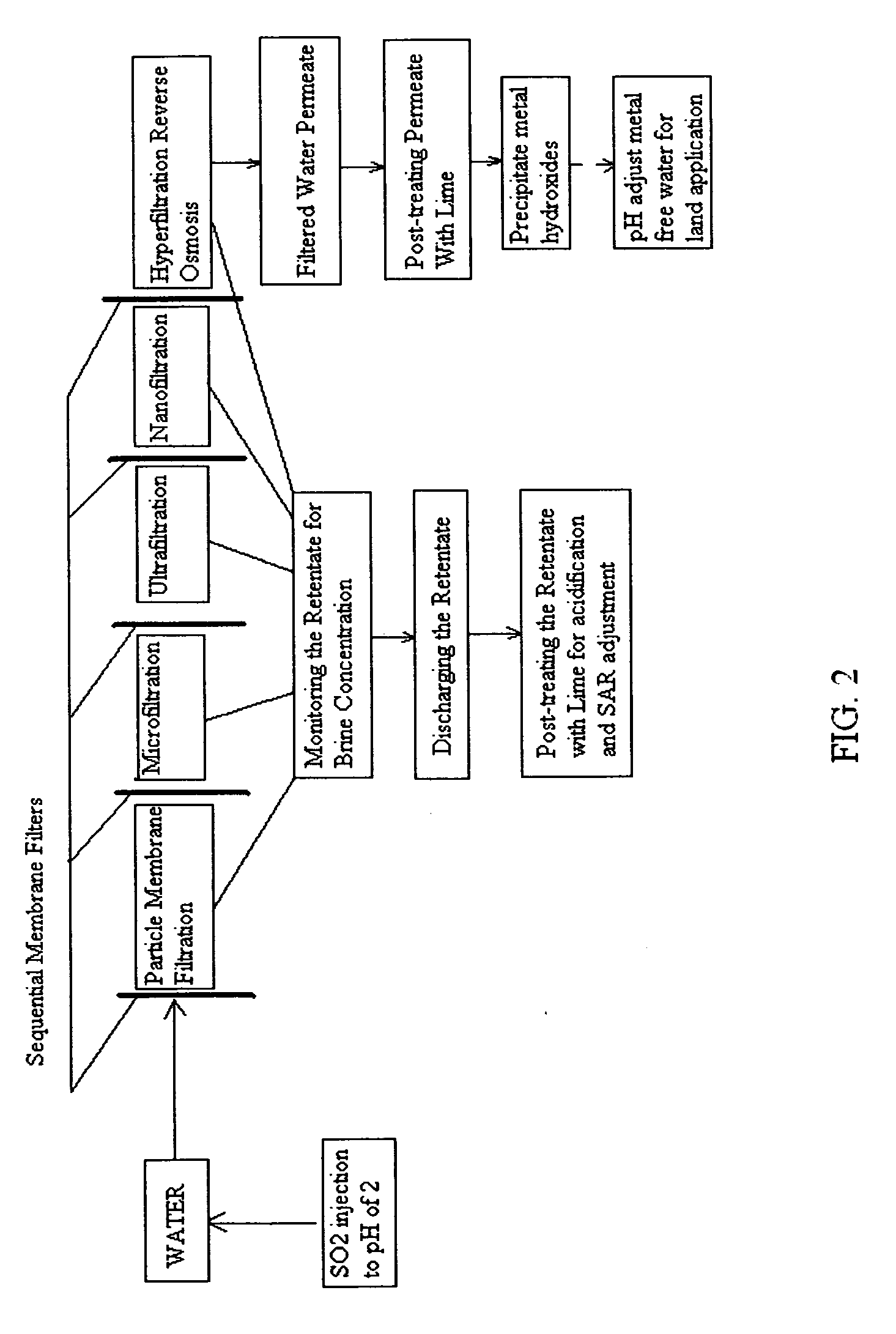Reverse osmosis water recover method
- Summary
- Abstract
- Description
- Claims
- Application Information
AI Technical Summary
Benefits of technology
Problems solved by technology
Method used
Image
Examples
Embodiment Construction
[0136]FIG. 1 is a schematic view of a preferred method of the invention. It comprises injecting sufficient sulfurous acid into the water to be sequentially filtered to reduce alkalinity scaling, add sufficient SO2 as a biocide to attack bacteria and other micro organisms to prevent fouling, and to reduce iron to prevent iron deposit build-up. This can be done through a single or multiple injection points and is a method that can provide membrane cleaning benefits to all of the sequential membrane filters (particle membrane filtration), (microfiltration), (ultrafiltration), (nanofiltration), and (hypofiltration). It thus minimizes the need for separate sulfurous acid membrane treatment applications.
[0137]The continuous addition of small dosages of sulfurous acid can slow and minimize scaling, biofilm, and iron deposit build-up on the membranes, thereby prolonging their life and filtration effectiveness. As all membranes are continually treated, the membranes may not have to be indivi...
PUM
| Property | Measurement | Unit |
|---|---|---|
| Percent by mass | aaaaa | aaaaa |
| Soil salinity | aaaaa | aaaaa |
| Concentration | aaaaa | aaaaa |
Abstract
Description
Claims
Application Information
 Login to View More
Login to View More - R&D
- Intellectual Property
- Life Sciences
- Materials
- Tech Scout
- Unparalleled Data Quality
- Higher Quality Content
- 60% Fewer Hallucinations
Browse by: Latest US Patents, China's latest patents, Technical Efficacy Thesaurus, Application Domain, Technology Topic, Popular Technical Reports.
© 2025 PatSnap. All rights reserved.Legal|Privacy policy|Modern Slavery Act Transparency Statement|Sitemap|About US| Contact US: help@patsnap.com



